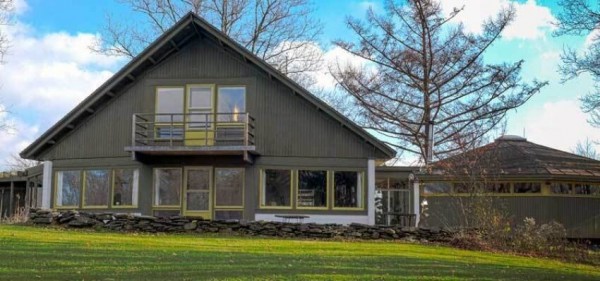Hilltop House and Studio accepted into Historic Artists' Home and Studio Program
The National Trust for Historic Preservation recently announced that four new sites in New York, California, and Michigan have been accepted into their prestigious Historic Artists’ Homes and Studios (HAHS) program. All four sites are the preserved homes and studios of significant American women artists and are open to the public.

Hilltop House and Studio accepted into Historic Artists' Home and Studio program
CNY Arts is excited to share the news of the acceptance of the Dorothy Riester House and Studio at the Stone Quarry Hill Art Park in Cazenovia into their prestigious Historic Artists’ Homes and Studios (HAHS) program. The Hilltop House and Studio is one of four preserved homes and studios of significant American women artists accepted into HAHS this year.
- Hillltop House, the artist-designed house, landscape, and sculpture park of ceramicist, sculptor, author and preservation activist Dorothy Riester (1916—2017) in Cazenovia, New York; • The Victor D’Amico Institute of Art, the Long Island home, and retired Navy barge that artist couple Mabel D’Amico (1909—1998) and Victor D’Amico (1904—1997) transformed into an arts school to advance their philosophies of progressive arts education.
HAHS is deeply committed to representing the full breadth and diversity of our country’s artistic legacy through preserved places nationwide. The sites selected also capture the spirit of the National Trust’s larger initiative, Where Women Made History, a national campaign to identify, honor, and elevate places across the country where women have changed their communities and the world.
Sarah Tietje-Mietz, director of Hilltop House, says, “Having Dorothy’s creative life examined as part of the larger dialog of artists’ homes and studios will develop a more profound understanding of the importance of a life lived in art —especially one lived by a 20th century woman artist. We are honored and beyond excited to be part of a community that both celebrates the range of environments shaped by artists and challenges itself to expand the traditional notions of historical importance."
With the recent centennial celebration in 2020 of the passage of the 19th amendment that granted women the right to vote, it was an important moment for HAHS to increase its representation of sites dedicated to the legacy of women artists. With the addition of these four sites, HAHS is proactively ensuring that it will tell a fuller story of those artists who have traditionally been underrepresented for their contributions to our cultural heritage including people of color, indigenous, self-taught, and women artists.
“These sites preserve the complex stories of four women artists who were groundbreaking in art and arts education, each contributing not only through their own artwork, but through the mentorship, opportunity, and influence they provided to younger and upcoming artists,” said HAHS Senior Program Manager, Valerie Balint. “By placing these women’s inspiring stories at the forefront, HAHS and the National Trust are helping to fulfil a vital need for more gender equity in how we frame artistic heritage and hierarchy. We will continue to expand the membership in 2021 to bring on other sites whose compelling stories increase racial diversity and social equity.”
The introduction of Hilltop House in Cazenovia also increases the geographic representation of HAHS to include 22 states in the nation and expand the portfolio of twentieth-century sites within the network, creating a rich and balanced representation of nineteenth-century artist spaces.
About the Historic Artists’ Homes and Studios Program
Historic Artists’ Homes and Studios network is a peer-to-peer coalition of sites that brings these museums together to conserve the legacy of creativity in the visual arts in the United States. Since its establishment by the National Trust for Historic Preservation in 1999, HAHS has developed into a successful community of practice, working with 48-member sites that more than one million visitors in nearly every part of the United States. This network of sites leverages the knowledge and experience of individual members to benefit the entire coalition in critical areas, including historic preservation, visitor and community programming, and communications. artistshomes.org
